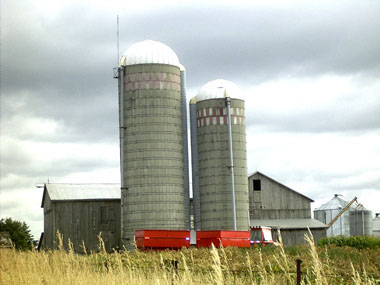Irrigation is warranted where the climate is essentially arid or semiarid and is characterized by low and unpredictable precipitation (see Rain). In certain areas, such as the southern prairies, southern BC and SW Ontario, irrigation can be used to supplement limited rainfall to achieve desirable crop yields. In Canada irrigation is a relatively recent phenomenon. Before the 1890s, all irrigation was developed by private individuals. From 1898 to 1915, the major incentive was provided by private investment companies and corporations, including the Canadian Pacific Railway. Since 1915 provincial governments have helped local communities organize irrigation developments, resulting in rapid increases in irrigated areas. In 1935 the federal government, through the Prairie Farm Rehabilitation Administration, initiated a program to provide technical and financial assistance for the development of individual farm, community or large-scale water storage projects throughout the plains area. During the 1950 to 1960 period, the PFRA designed and constructed 2 major irrigation projects in co-operation with the governments of Alberta and Saskatchewan. The St Mary and Waterton dams and several internal storage reservoirs led to the development of the St Mary River Irrigation District in southern Alberta, Canada's largest, which comprised 132,600 ha in 1986. In south-central Saskatchewan, the Gardiner Dam, a multipurpose development, also established Saskatchewan's largest irrigation block of some 21,000 ha. Smaller project developments by PFRA and all the western provinces have continued through the 1970s and 1980s, including rehabilitation of older projects and major irrigation works.
About 747,625 ha of Canadian farmland were irrigated in 1986. Statistics Canada reports the total by region as follows: Atlantic provinces, 2038 ha; Qué, 15,284 ha; Ont, 52,535 ha; Prairie provinces, 559,954 ha (of which 466,291 ha were in Alta); BC, 117,811 ha. The most intensive irrigation development has taken place in southern Alberta. In 1970, the Alberta government, together with 13 irrigation districts, launched a major cost-shared irrigation rehabilitation program. During the period 1970-86, the province invested some $525 million for capital works rehabilitation and the districts expended $97 million, including their share for operation and maintenance. Rehabilitation of capital works has continued since 1970 to date on the 86:14 formula basis, which economic studies have determined as the ratio of "societal" accrued benefits and direct benefits to irrigation farmers.
Other provinces have established different policies and cost-sharing agreements with the federal government for new developments, notably Saskatchewan, which announced a $100-million irrigation development agreement in 1986. Lack of sufficient rainfall is most limiting to crop production and agricultural diversification throughout the southern prairies. Within this region the soils and growing season are conducive to irrigation development on upwards of 2 to 3 million ha. However, future irrigation expansion is significantly curtailed by limited availability and location of major water sources, the high cost of capital works development, ie, storage dams, diversions and distribution networks, and by global market competition in agricultural commodities.
In Alberta, for example, while only 4% of arable land is irrigated, the production from this acreage accounts for approximately 18% of the province's gross annual agricultural production (approximately $850 million annually). Some 5800 irrigation farms are sustained in a region which otherwise could support perhaps fewer than 1000 dryland wheat and range cattle operations. Irrigation development and related services and processing industries account for the employment of some 35,000 people in Alberta, and sustain one of the most productive and diversified agricultural regions of Canada.

 Share on Facebook
Share on Facebook Share on X
Share on X Share by Email
Share by Email Share on Google Classroom
Share on Google Classroom


